We’ve all seen, and probably shouted, the catchy slogans – Say No to GMO! Keep your genes out of our meats and greens! We’ve read countless articles on the dangers of the genetically modified organisms (GMO) as well as the chemicals and foods they are sprayed and fed. We sign petitions, hit the “share” button to the various social media outlets, and get into screaming matches with friends and family members who don’t see the harm in GMOs. But do any of us really know how GMOs are approved? Do we know the best way to fight them? I’m going to guess no since it’s the eighth day of an open public commenting period about the use of DOW’s 2,4-dichlorophenoxyacetic acid (2,4-D), one of the main components of Agent Orange used in Vietnam, at the Environmental Protection Agency (EPA) and there are only a whopping 340 comments at this time. It actually didn’t occur to me that I didn’t really understand the full approval process until stumbling across the “public commenting period.” What I found was rather shocking.
Genetically modified foods and the chemicals that are sprayed on them as a result of their herbicide and pesticide resistance properties fall under the regulatory span of the United States Department of Agriculture (USDA), Food and Drug Administration (FDA), and EPA. What follows is a brief explanation how each agency works and what acts have been passed to monitor, or attempt to monitor, GMOs. Under the regulations of all three of these agencies, only the following categories of GM crops are monitored:
Plant-Incorporated Protectant (PIP) – a plant that produced pesticidal proteins or other chemicals as a result of genetic material from a bacterium into the plant. In these plants, scientists add modify the genes of corn, for example, to express a pesticidal property so that when pests digest the crop it releases a bacterial protein that will kill the pest. Yes, if we digest this plant we are also digesting this poisonous bacterial protein.
Genetically Modified Microbial Pesticides – bacteria, fungi, viruses, protozoa, or algae that has been modified to express a pesticidal properties like a PIP. In this case, the microbial pesticides are sprayed on the crop.
Herbicide-Tolerant Crops – this is the answer to the problem of weed-killer killing the crop it’s sprayed on. Like PIPs, the crop has been genetically modified to withstand the herbicides by adding the herbicide to the genetic make-up of the crop. The most commonly herbicide-tolerant crop is tolerant to glyphosate, a known carcinogen and hormone disrupter. Like most chemical substances, the weeds are becoming resistant to glyphosate in Monsanto’s Round Up. Thus Monsanto has teamed up with DOW Chemical to create crops resistant to 2, 4-D, as I mentioned before this is the main chemical ingredient for Agent Orange. Like PIPs, we are not only ingesting and breathing 2,4-D, being sprayed on our food, but it is actually part of our food.
Other GMOs that interchange DNA from one plant or animal species to another do not fall under the regulation of these agencies (and as far as I have researched, they do not seem to fall under any other regulating agency either).
USDA
The USDA is the U.S. federal executive department responsible for developing and executing federal government policy on farming, agriculture, forestry, and food. It aims to meet the needs of farmers and ranchers, promote agricultural trade and production, work to assure food safety, protect natural resources, foster rural communities and end hunger in the United States and abroad. The USDA is not responsible for monitoring the safety of GMOs for human or animal consumption, but rather how it affects plant health. Within the USDA is the Animal and Plant Health Inspection Service (APHIS), which is responsible for protecting agriculture from pests and diseases. Under APHIS is the Biotechnology Regulatory Services (BRS) which is part of a science-based federal regulatory framework to protect America’s agricultural resources and the broader environment. The BRS has strict regulations for any new organism either imported, crossing state lines or being introduced, but only to ensure that it does not present a plant pest risk.
As long as GMOs either introduced to American farms or imported do not present a risk to plants, the USDA does not have regulate it. The responsibility of safety for human and animal consumption is passed to the FDA.
FDA
The FDA is an agency of the United States Department of Health and Human Services, one of the United States federal executive departments. The FDA is responsible for protecting and promoting public health through the regulation and supervision of food safety, tobacco products, dietary supplements, prescription and over-the-counter pharmaceutical drugs (medications), vaccines, biopharmaceuticals, blood transfusions, medical devices, electromagnetic radiation emitting devices (ERED), cosmetics and veterinary products. As far as GMOs go, under the Federal Food, Drug, and Cosmetic Act (FFDCA), as long as the bioengineered food is substantially equivalent to non-GM crops or is generally recognized as safe, it does not require pre-market approval. There are no specific regulations for GMOs and they fall under the same regulation as conventional foods. In 1992, the FDA published a policy statement titled: Food for human consumption and animal drugs, feeds, and related products: Foods derived from new plant varieties; policy statement, 22984. This policy statement specifically addresses genetically modified foods, but disturbingly there is little regulation within this policy:
Under this policy, foods, such as fruits, vegetables, grains, and their byproducts, derived from plant varieties developed by the new methods of genetic modification are regulated within the existing framework of the act, FDA’s implementing regulations, and current practice, utilizing an approach identical in principle to that applied to foods developed by traditional plant breeding. The regulatory status of a food, irrespective of the method by which it is developed, is dependent upon objective characteristics of the food and the intended use of the food (or its components).The method by which food is produced or developed may in some cases help to understand the safety or nutritional characteristics of the finished food. However, the key factors in reviewing safety concerns should be the characteristics of the food product, rather than the fact that the new methods are used.
In other words, as long as a protein remains a protein and a carb remains a carb, it doesn’t matter how it’s produced. In 1997, the FDA started a voluntary consultation process for GM crop developers, but seeing as it is voluntary, I would hardly call that legitimate legislation. In 1998, Monsanto’s then director of corporate communications, Phil Angell, stated:
“Monsanto should not have to vouchsafe the safety of biotech food. Our interest is in selling as much of it as possible. Assuring its safety is the FDA’s job.”
The FDA’s role should be to monitor the safety of these new genetically modified plants that are used both as human food and animal food, however, there are simply no regulations specifically for GMOs.
GMO Labeling
In regards to labeling, per the FFDCA, the only labeling required from the producer is the common or usual name, or in the absence thereof, an appropriate descriptive term. The only exception is if a safety or usage issue exists due to the genetic mutation and consumers must be alerted. For example, if peanut genes are added to a tomato, the tomato can no longer be called a tomato because potential allergic reactions. I’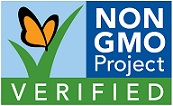 m sure in cases like this, the marketing department is full of clever titles like tomatut or peanato. Currently, 25 states have introduced mandatory GMO labeling legislation. Vermont and Connecticut have actually passed laws forcing GMO products to be labeled. The Non-GMO Verification Project is a nonprofit organization that provides third party volunteer testing and labeling for products. I always look for Non-GMO Project Verified label when I shop.
m sure in cases like this, the marketing department is full of clever titles like tomatut or peanato. Currently, 25 states have introduced mandatory GMO labeling legislation. Vermont and Connecticut have actually passed laws forcing GMO products to be labeled. The Non-GMO Verification Project is a nonprofit organization that provides third party volunteer testing and labeling for products. I always look for Non-GMO Project Verified label when I shop.
The USDA only cares about the plant, the FDA doesn’t care as long as a tomato remains a tomato. A majority of people don’t believe the various reports of cancer and infertility caused in lab mice fed GMOs and ignore the fact that there have not been any comprehensive studies on the affects of human consumption of GMOs, but even if we deny that GMOs could be dangerous, there is no denying that spraying dangerous chemicals such as glysophate and Agent Orange on fields and backyards is dangerous and should be regulated, right? That’s where the EPA comes into play.
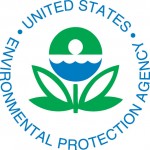 EPA
EPA
The EPA is another regulatory agency. It has primary responsibility for enforcing many of the environmental statutes and regulations of the United States. Congress authorizes the EPA to write regulations that explain the critical details necessary to implement environmental laws and Presidential Executive Orders.
The EPA’s role in the environmental safety of GMOs falls under the Federal Insecticide, Fungicide, and Rodenticide Act (FIFRA). According to the EPA website:
FIFRA provides for federal regulation of pesticide distribution, sale, and use. All pesticides distributed or sold in the United States must be registered (licensed) by EPA. Before EPA may register a pesticide under FIFRA, the applicant must show, among other things, that using the pesticide according to specifications “will not generally cause unreasonable adverse effects on the environment. FIFRA defines the term ”unreasonable adverse effects on the environment” to mean: “(1) any unreasonable risk to man or the environment, taking into account the economic, social, and environmental costs and benefits of the use of any pesticide, or (2) a human dietary risk from residues that result from a use of a pesticide in or on any food inconsistent with the standard under section 408 of the Federal Food, Drug, and Cosmetic Act.”
FIFRA was first passed into law in 1947, but has been amended since then. In 1972, FIFRA was essentially rewritten and amended by the Federal Environmental Pesticide Control Act. In 1996, it was again significantly amended as the Food Quality Protection Act.
While the EPA seems to hold the strictest regulations of the three agencies discussed in this article, it seems they are still coming up short. In order for a new pesticide to acquire a license from the EPA, the producer must provide more than a hundred scientific tests and studies. But, like the FDA, the producer of the pesticide provides the tests and the EPA does not actually conduct any tests on the new product. Furthermore, if it is being licensed for use on a crop less than 300,000 acres it is not considered sufficient economic incentive for registration.
EPA and GMO Regulation
Whether or not the EPA is actually regulating safe limits of pesticide aside, let’s look at their role in GMOs. Under FIFRA, the EPA provides legal requirements for registration and licensing of pesticides and therefore only monitors GMOs that are pesticidal in nature (PIP, Genetically Modified Microbial Pesticides, or Herbicide-Tolerant Crops).
The EPA also sets tolerances, and exemptions from tolerances, for the allowable residues of pesticides applied to food and animal feed under the FFDCA. However, given the pollution levels and a new study conducted by the California Department of Public Health showing a high number of California children being exposed to high level of pesticides at schools located near farms, I don’t have much faith in the EPA’s ability to safely regulate the use of pesticides.
Are GM Foods Safe?
In the end you have to ask – are GMOs safe for me and my family? Some people 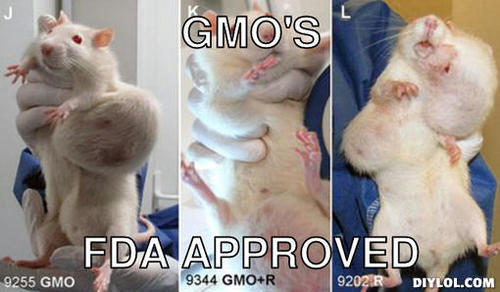 believe that the USDA, FDA, and EPA regulations are enough proof that they are safe, however, studies in rats fed GMO food over the course of a life time suffered premature deaths (up to 50% of males and 70% of females) and had severe organ damage (specifically liver and kidney). Also, the rats drank trace amounts of Roundup in their water (within legal limits set by these regulatory agencies) and had a 200% to 300% increase in large tumors (for more information and photos, click here).
believe that the USDA, FDA, and EPA regulations are enough proof that they are safe, however, studies in rats fed GMO food over the course of a life time suffered premature deaths (up to 50% of males and 70% of females) and had severe organ damage (specifically liver and kidney). Also, the rats drank trace amounts of Roundup in their water (within legal limits set by these regulatory agencies) and had a 200% to 300% increase in large tumors (for more information and photos, click here).
What can YOU do?
Learn more. Do your own research on whether or not GMOs and the chemicals used on our crops are safe for consumption and the environment.
Spread the news. My friends and family are sick of hearing me telling anyone who will listen about the dangers of GMO, but I believe one person can make a difference so I keep fighting the good fight.
Buy organic, non-GMO foods. There are plenty of websites, like the Environmental Working Group, dedicated to helping families buy organic on a tight budget. Buying from local farmers can reduce cost (depending on where you live) or even buying your online. Another budget friendly tip – don’t eat out. We vote for or against GMO every time we check out at the grocery store or favorite fast food chain – make your vote count!
Get involved. I don’t mean you should quit your job to travel across the country leading protests (although if you can, go for it!). Simply watching legislation and writing in to the EPA and FDA and telling them you DON’T want Agent Orange sprayed in your backyard, is something everyone can do. We have until May 30th to tell the EPA we do not approve. Click here to add your comments. There are numerous organizations that write and submit petitions against GMOs. The Center for Food Safety is running a campaign against the use of DOW Chemical’s 2,4-D.
What do you and your family do to stop the spread of GMOs? What are your favorite NON-GMO products?



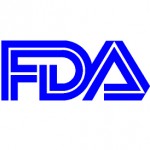











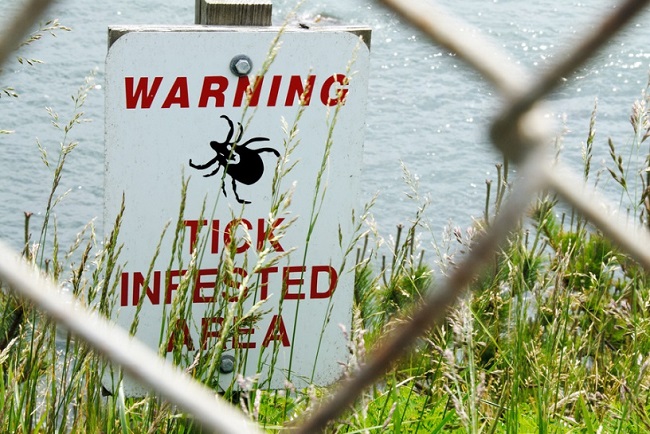


Hello, Is there a website where we can sign a petition against GMO’s? Thank you